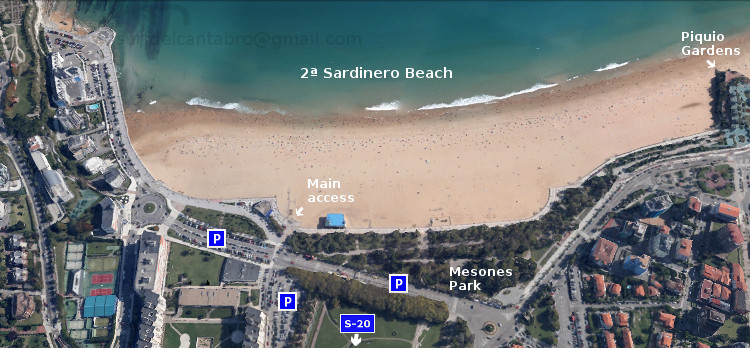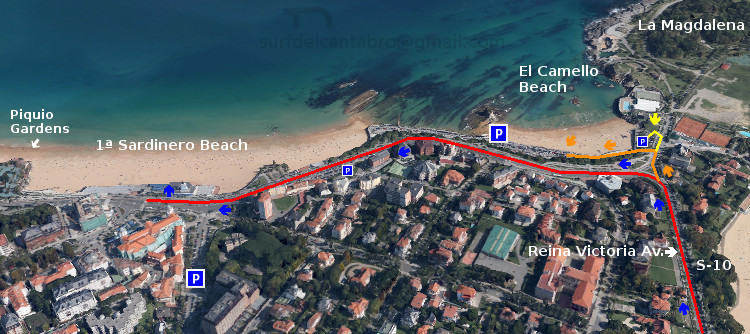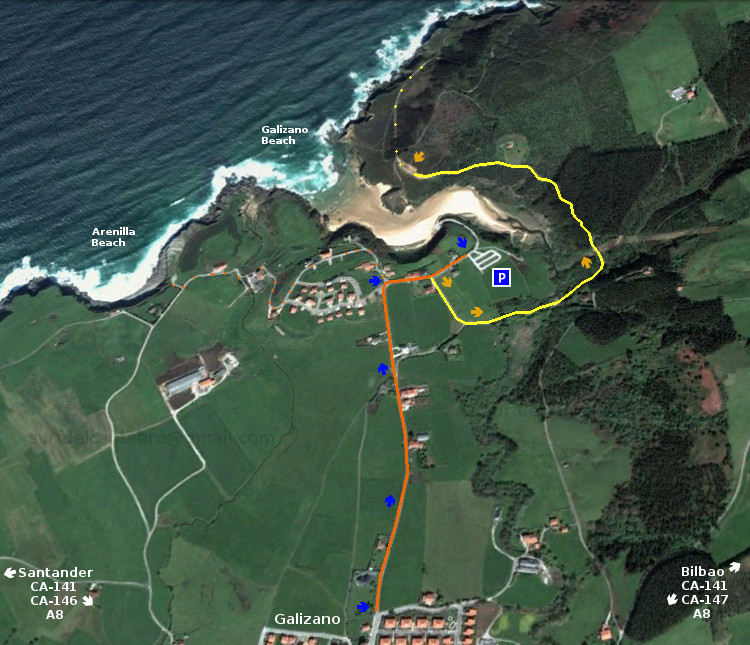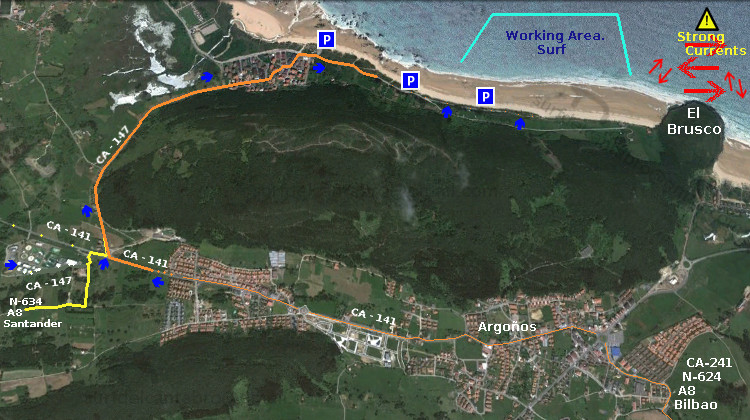 La Playa de Los Peligros está situada en la ciudad de Santander, junto a la Playa de la Magdalena.
La Playa de Los Peligros está situada en la ciudad de Santander, junto a la Playa de la Magdalena.
Para llegar a Los Peligros hay dos vías. La primera desde la Calle Castelar cogiendo el desvío a mano derecha para ir al Palacio de Festivales de Cantabria. Después continuamos la carretera hasta el final. La segunda opción desde la Avenida Reina Victoria, viniendo de la península de la Magdalena. Al Final de la avenida, girando a la izquierda se accede a parte del recorrido anterior.
Los Peligros es una playa de arena blanca y fina. Sus aguas son tranquilas y sin oleaje. Es adecuada para el baño, el disfrute del mar y su arenal. Cuenta con un parking amplio que se suele llenar en verano. El paseo hasta la playa constituye en sí mismo un pequeño viaje. Al tiempo que se ve una parte portuaria antigua de la ciudad se visualiza la Bahía de Santander y un puzzle montañoso al fondo.
Los días de viento esta sencilla zona se convierte en un circuito deportivo frecuentado por velas y cometas de winsurf y kitesurf. Desde la playa se entra a estas autopistas virtuales que cuentan con suficiente espacio para disfrutar de estas modalidades de surf. En este lugar generalmente el viento está presente en mayor o menor grado. Convirtiendo a la playa de Los Peligros en un lugar ideal para la práctica del windsurf y kitesurf.
Playa de Los Peligros: windsurf, kitesurf
 Los Peligros Beach is located in the city of Santander, next to the Magdalena Beach.
Los Peligros Beach is located in the city of Santander, next to the Magdalena Beach.
To reach Los Peligros there are two ways. The first from the Castelar Street. Taking the detour to the right to go to the Palacio de Festivales de Cantabria. Then we continue the road to the end. The second option from the Avenida Reina Victoria, coming from the peninsula of la Magdalena. At the end of the avenue, turning to the left to access part of the above route.
Los Peligros is a beach of fine and white sand. Its waters are calm and without waves. It is suitable for the swiming, the enjoyment of the sea and its arenal. Account with an ample car parking which is usually fill in summer. The walk down to the beach is a small trip. At the same time that we see a part of the ancient port part of the city is displayed the Santander Bay and a puzzle of mountains in the background.
The windy days this area becomes a sporting circuit frequented by sails and kites of windsurfing and kitesurfing. From the beach you access to several and endless virtual highways that have enough space to enjoy these modalities of surfing. The wind is usually present to a greater or lesser degree in this zone. Turning to Los Peligros Beach in an ideal place for windsurfing and kitesurfing.


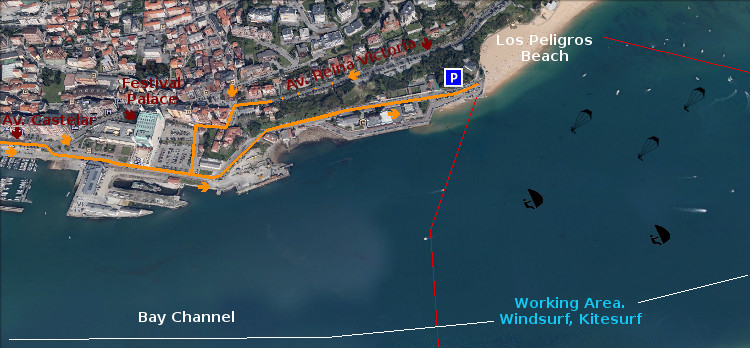

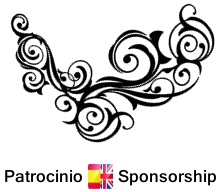
![]() Más de 80 participantes en la segunda edición de la competición deportiva de Surf y Snow celebrada en Somo y Alto Campoo. Leer más …
Más de 80 participantes en la segunda edición de la competición deportiva de Surf y Snow celebrada en Somo y Alto Campoo. Leer más … ![]()
![]() More than 80 participants in the second edition of the championship of surfing and snowboarding held in Somo and Alto Campoo. Read more …
More than 80 participants in the second edition of the championship of surfing and snowboarding held in Somo and Alto Campoo. Read more … ![]()
![]()
![]()
![]()

